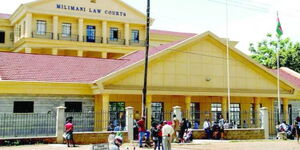Nairobi Senator Johnson Sakaja revealed that he wrote an entire article in the new Constitution that was promulgated in 2010.
He was speaking at an event at Alliance Girls High School, where he told the students that he penned Article 89 of the Constitution titled Delimitation of Electoral Units, at just 24 years of age.
"The constitution you have today, I wrote an entire article on the formula for the delimitation of constituencies, at 24," he stated.
When he came up with the formula, Sakaja had been consulted by Nancy Gitau, who was State House's political advisor.
She asked him for his views on the said topic and he responded that he would think about it and advice.
When the team that was working on the draft laws retreated to Naivasha, he represented PNU whereas ODM had brought a very senior Professor.
President Mwai Kibaki and the rest of the team were so impressed at the 24-year-old that they chose Sakaja's proposal over the Professor's.
The Senator stated that he narrated the story in a bid to motivate the students to believe in themselves.
He also told them that he depended on God throughout his life, adding that he used to write Philippians 4:13 in all his exam papers.
The formula used to establish electoral units as crafted by Sakaja states that; "The boundaries of each constituency shall be such that the number of inhabitants in the constituency is, as nearly as possible, equal to the population quota, but the number of inhabitants of a constituency may be greater or lesser than the population quota in the manner specified."
Considerations that are taken into account when deciding the boundaries include geographical features and urban centres, the community of interest, historical features, economic and cultural ties and means of communication.
According to the Constitution, the number of inhabitants of a constituency or ward may be greater or lesser than the population quota by a margin of not more than forty per cent for cities and sparsely populated areas and thirty per cent for the other areas.












